A hollow cylindrical box of length 0.5m and area of cross-section 20cm2 is placed in a three dimensional coordinate system as shown in the figure. The electric field in the region is given by →E=20xˆi, where E is NC−1 and x is in meters, Find
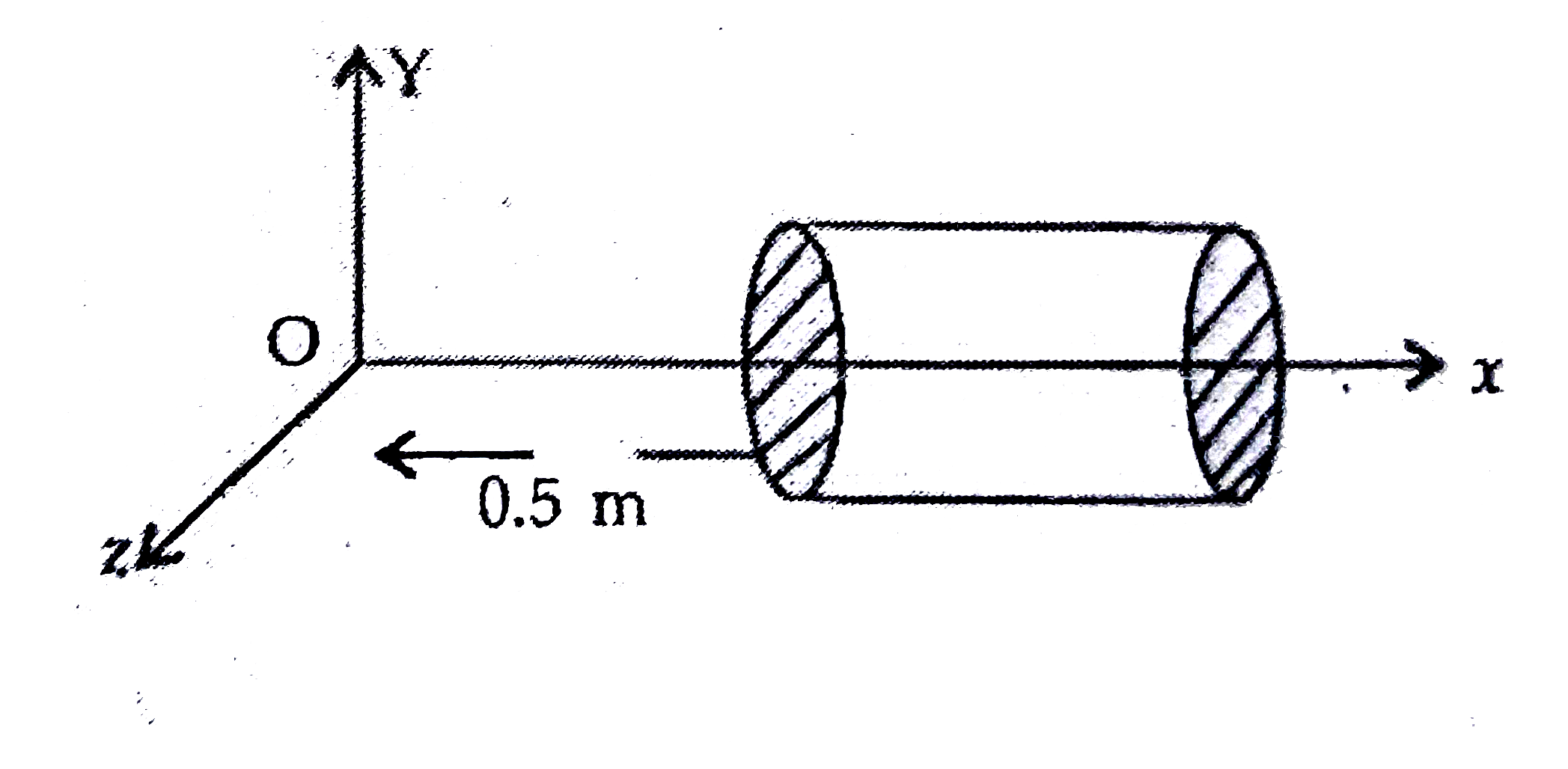
(i) Net flux through the cylinder.
(ii) Charge enclosed in the cylinder.
(i) Given, →E=20xˆi
and Δs=20cm2=20×10−4m2
As the electric field is only along the x-axis, so flux will pass only through the cross-section of cylinder.
Magnitude of electric field at A,
EA=20×0.5=10N/C
Magnitude of electric field at cross-selection B.
EB=20×1=20NC−1
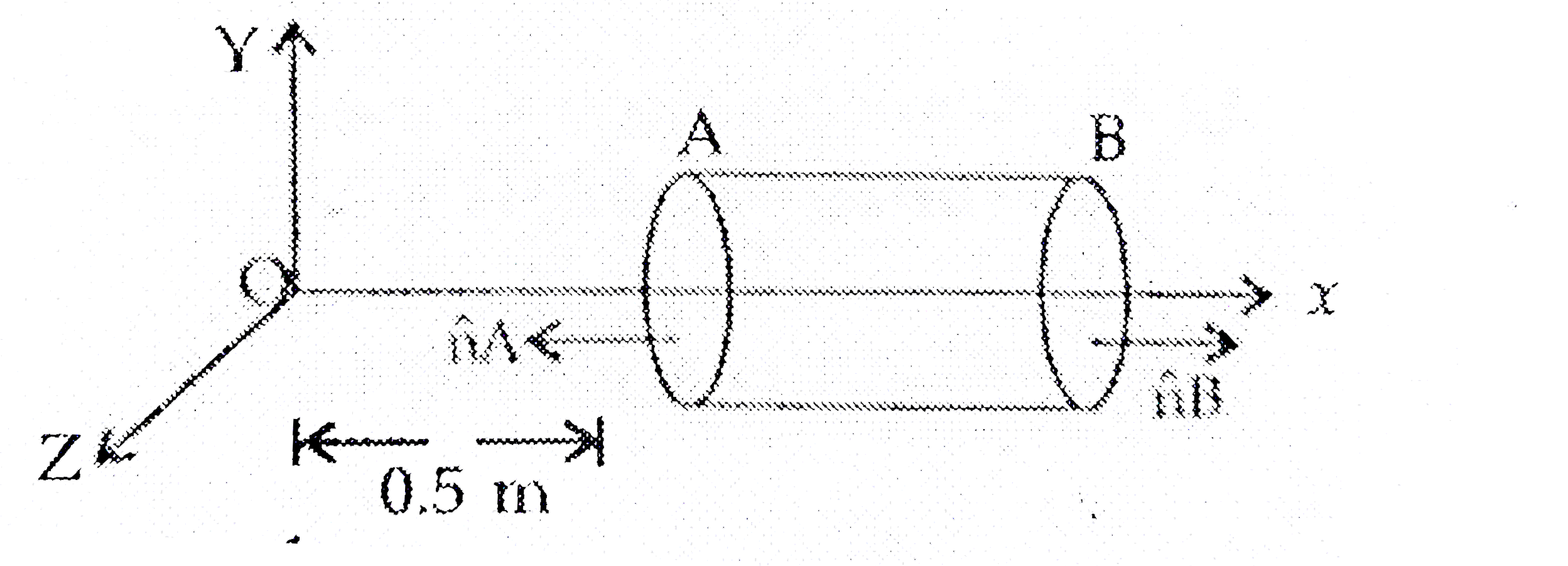
The corresponding electric fluxes are
ϕA=→E.Δ→s
=10×20×10−4×cos180∘=−0.02Nm2C−1
ϕB=→E.Δ→s
=20×20×10−4×cos0∘=0.04Nm2C−1
So, the net flux through the cylinder,
ϕ=ϕA+ϕB
=−0.02+0.04=0.02Nm2C−1
(ii) Using Gauss's Law:
∮¯¯¯E.¯¯¯¯ds=qE0
0.02=q8.85×10−12
q=8.85×0.02×10−12
q=0.177×10−12C.
Topper's Solved these Questions
- BOOK - XII BOARDS PREVIOUS YEARCHAPTER - XII BOARDSEXERCISE - [SET - I]32videos
XII BOARDS
- BOOK - XII BOARDS PREVIOUS YEARCHAPTER - XII BOARDSEXERCISE - [SET - II DELHI BOARD]6videos
XII BOARDS
- BOOK - XII BOARDS PREVIOUS YEARCHAPTER - XII BOARDSEXERCISE - SET - II (Delhi Board)8videos
XII BOARDS
- BOOK - XII BOARDS PREVIOUS YEARCHAPTER - SAMPLE PAPER 2019EXERCISE - SECTION D6videos
SAMPLE PAPER 2019
Similar Questions
A hollow cylindrical box of length 1m area of cross-section 25cm2 is placed in a three dimensional coordinate system as shown in the electric field in the region is given
by →E=50xˆi,where E is in NC−1 and x is in metres . Find
(i) Net flux through the cylinder.
(ii) charge enclosed by the cylinder.
(##U_LIK_SP_PHY_XII_C01_E10_019_Q01.png" width="80%">View SolutionA cube of side 20 cm is kept in a region as shown in the figure. An electric field →E exists in the region such that the potential at a point is given by V=10x+5, where V is in volt and x is in m.

Find the
(i) electric field →E, and
(ii) total electric flux through the cube.View Solution
Knowledge Check
- Question 1 - Select One
A hollow cylindrical box of length 1m and area of cross section 25cm2 is placed in a three dimensional co-ordinate system as shown in Fig, The electric field in the
region is given by →E=50xˆi , where E is in NC−1 and x is in meter. Find
(i) Net flux through the cylinder
(ii) Charge enclosed by the cylinder.
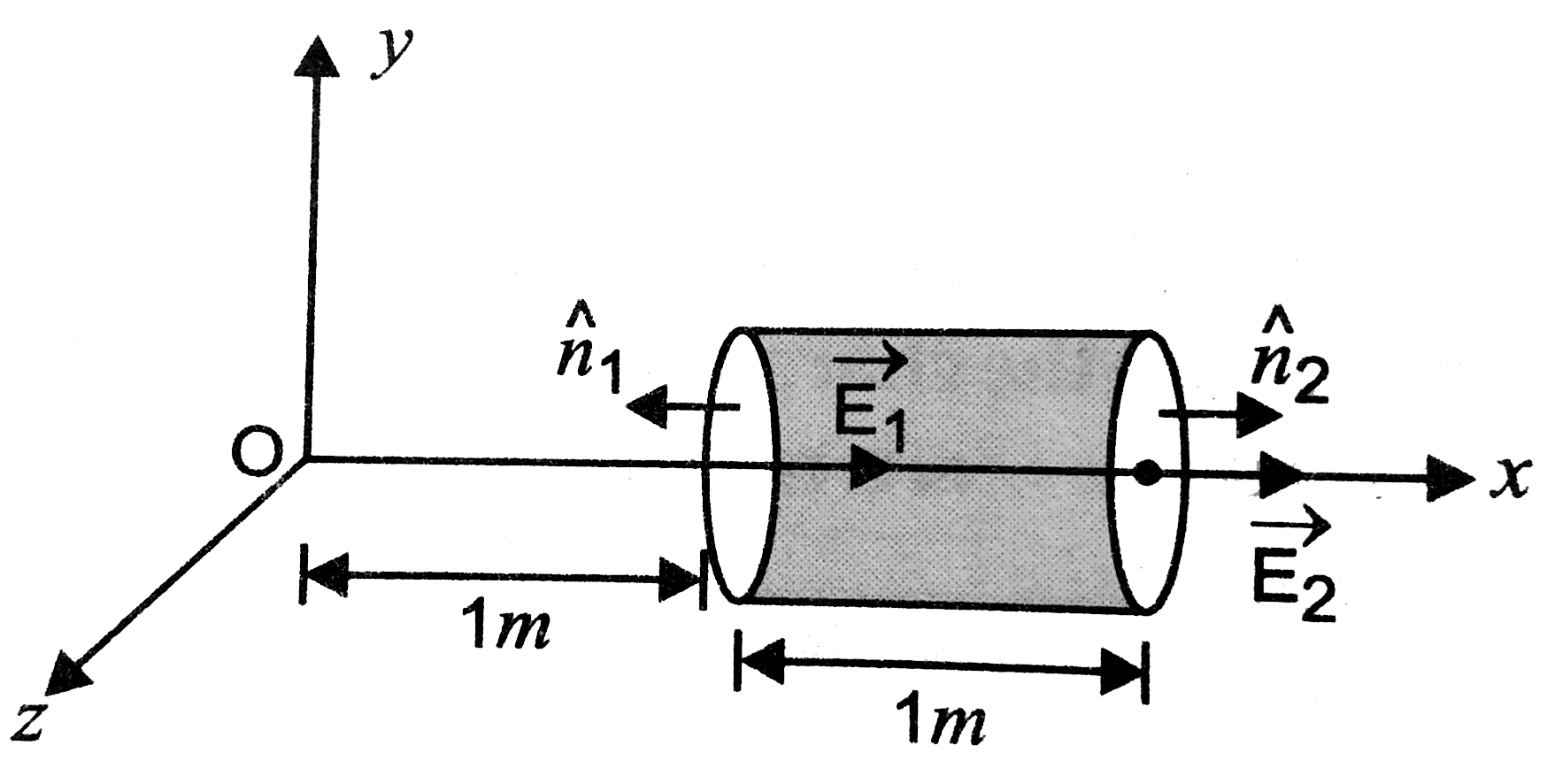 A(i) 0.625Nm2/C , (ii) 3.506×10−12CB(i) 0.125Nm2/C , (ii) 1.106×10−12CC(i) 0.330Nm2/C , (ii) 2.550×10−12CD(i) 2.125Nm2/C , (ii) 6.106×10−12C
A(i) 0.625Nm2/C , (ii) 3.506×10−12CB(i) 0.125Nm2/C , (ii) 1.106×10−12CC(i) 0.330Nm2/C , (ii) 2.550×10−12CD(i) 2.125Nm2/C , (ii) 6.106×10−12C - Question 2 - Select One
The electric field in a region is given by E=aˆi+bˆj. Hence as and b are constants. Find the net flux passing through a square area of side l parallel to y-z plane.
Aal3Bal2Cal4Dal - Question 3 - Select One
The electric field in a region is given by E=35E0ˆi+45E0j with E0=2.0x103N/C. Find the flux of this field through a rectangular surface of area 0.2m2 parallel to the y-z plane.
A24Nm2/CB240Nm2/CC440Nm2/CD44Nm2/C
A dipole is placed at origin of coordinate system as shown in figure, find the electric field at point P(0,y).
[KP√2y3(−ˆi−2ˆj)]
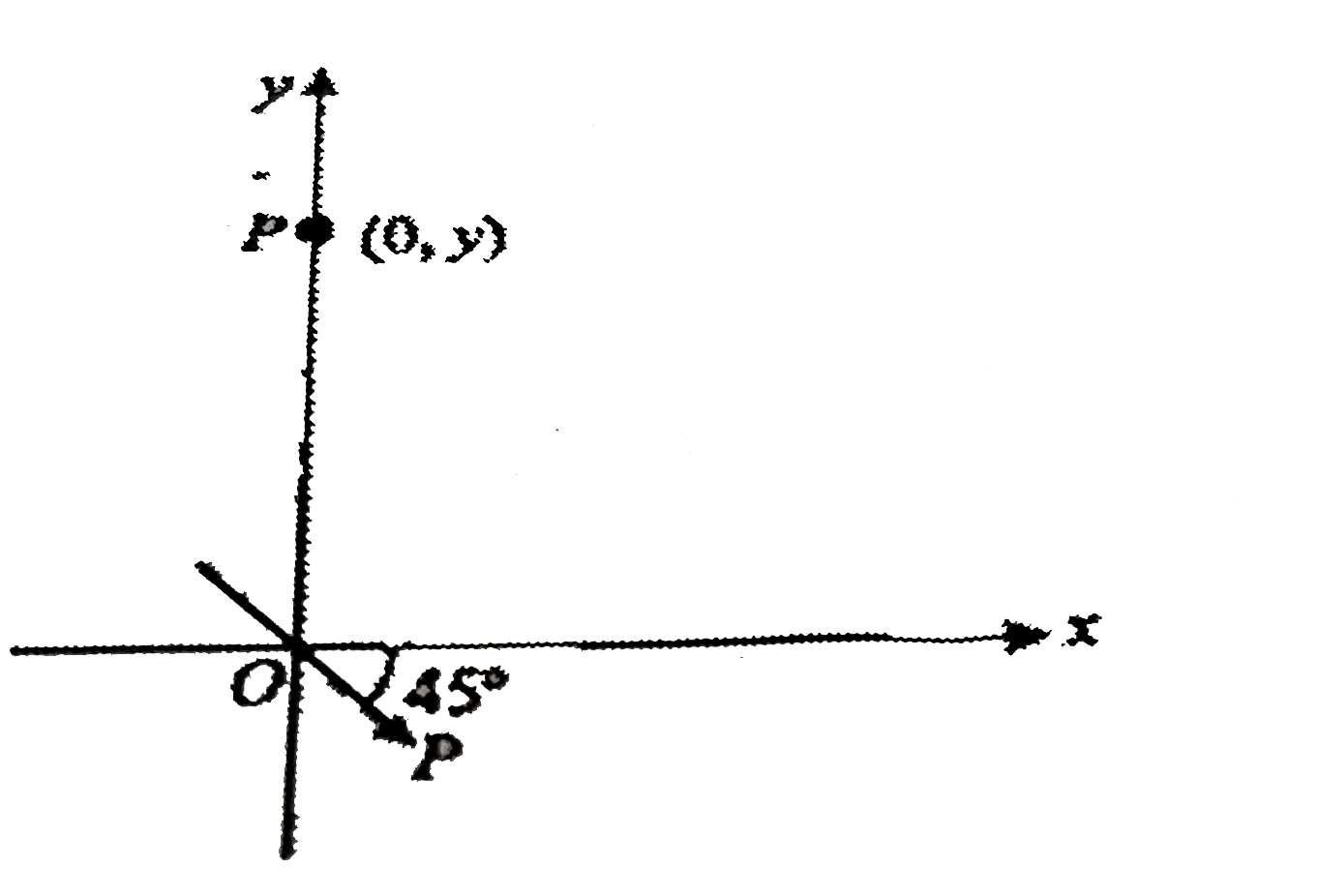 View Solution
View SolutionA cube has sides of length L=0.2 m It is placed with one corner at the origin as shown in figure The electric field in uniform and given by →E=(2.5ˆi−4.2ˆj)N/C .Find the electric flux through the entire cube.
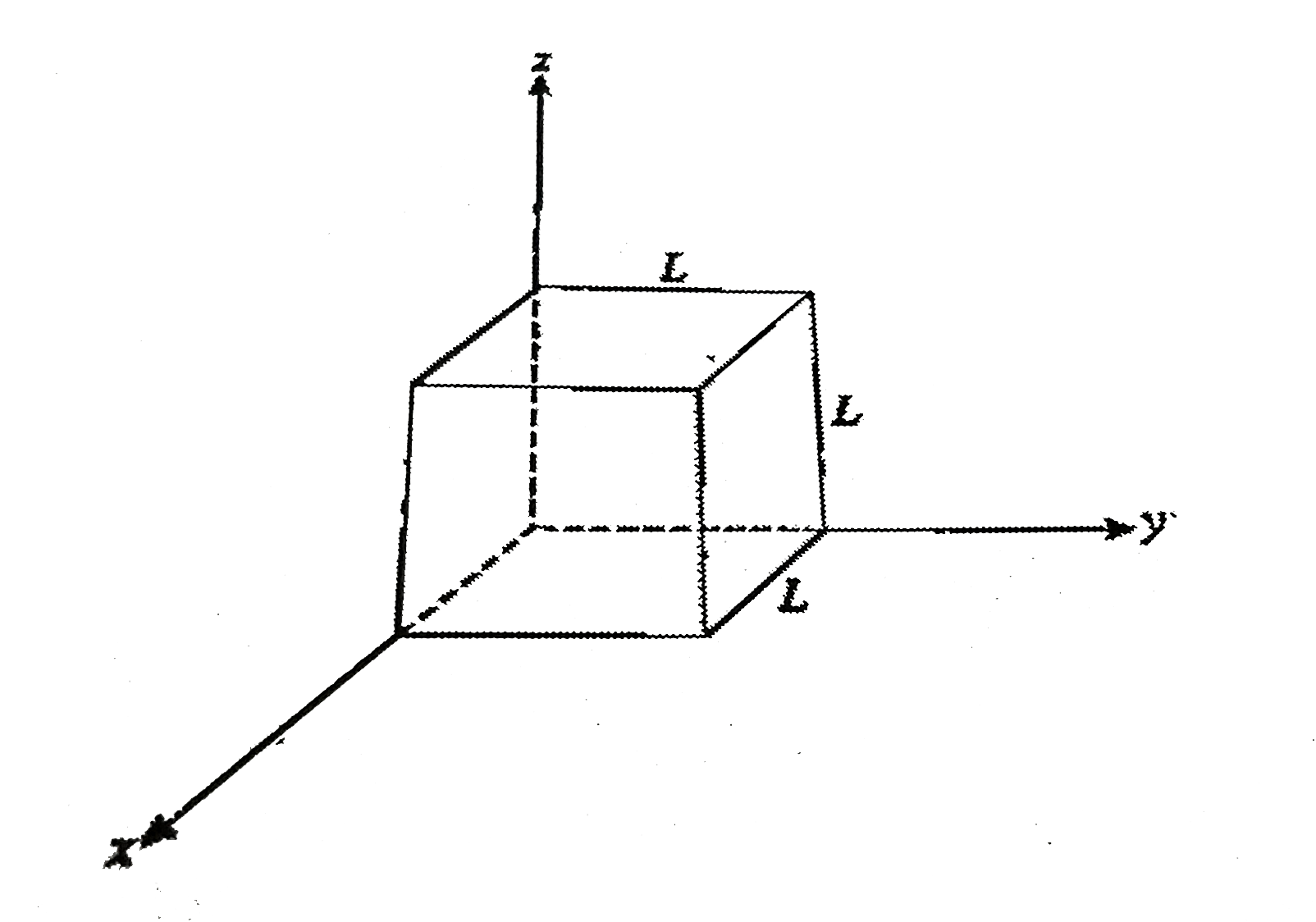 View Solution
View SolutionThe electric field in a region is given by →E=35E0→i+45E0→j with E0=2.0×103NC−1. Find the flux of this field through a recatngular surface of area 0.2m2 parallel to the y-z plane.
View Solution(A)Two point charges q1 and q2 are kept r distance apart in a uniform external electric field →E. Find the amount of work done in assembling this system of charges. (B) A cube of side 20 cm is kept in a region as shown in the figure. An electric field →E exists in the region such that the potential at a point is given by V=10x+5, where V is in volt and x is in m. Find the electric field →E and (ii) total electric flux through the cube.
 View Solution
View SolutionA cylinder of length L and radius b has its axis coincident with the x-axis. The electric field in the region →E=200ˆi. Find the flux through (i) the left end of cylinder (ii) the right end of cylinder (iii) the cylinder curved surface, (iv) the closed surface area of the cylinder .
View Solution

